
Fundamentals
The Acid Mantle, in its simplest interpretation, describes a very thin, slightly acidic layer that acts as a protective shield on the surface of human skin and hair. This delicate barrier, often invisible to the eye, plays a crucial role in defending against environmental aggressors, maintaining moisture, and supporting the scalp’s healthy microbial balance. It is a fundamental aspect of dermatological health, representing a sophisticated biological defense mechanism.
This acidic film is primarily composed of sebum (the skin’s natural oils), sweat, and amino acids, creating a pH range typically between 4.5 and 5.5. This optimal acidity is essential for the proper functioning of the skin’s barrier lipids and enzymes, which work in concert to keep the skin supple and resilient.
Understanding the Acid Mantle provides a foundational perspective on why certain care practices, particularly those inherited through generations within textured hair communities, have always held such profound significance. For textured hair, especially the coils and curls of Black and mixed-race hair, this protective layer is a primary guardian against dryness and fragility. The unique structure of textured strands, with their varying porosity and cuticle patterns, means that disruptions to the Acid Mantle can have more pronounced effects, leading to increased vulnerability to breakage and moisture loss.
The very concept of the Acid Mantle, though named by modern science, echoes a timeless wisdom. Ancestral communities, long before the advent of pH meters or scientific laboratories, intuitively understood the necessity of maintaining a balanced environment for hair and scalp. Their traditional methods, often involving plant-based ingredients and meticulous care rituals, inadvertently preserved this vital acidic shield, ensuring the vitality of their strands. This inherent connection between ancient practice and contemporary understanding offers a powerful testament to the enduring intelligence of heritage.
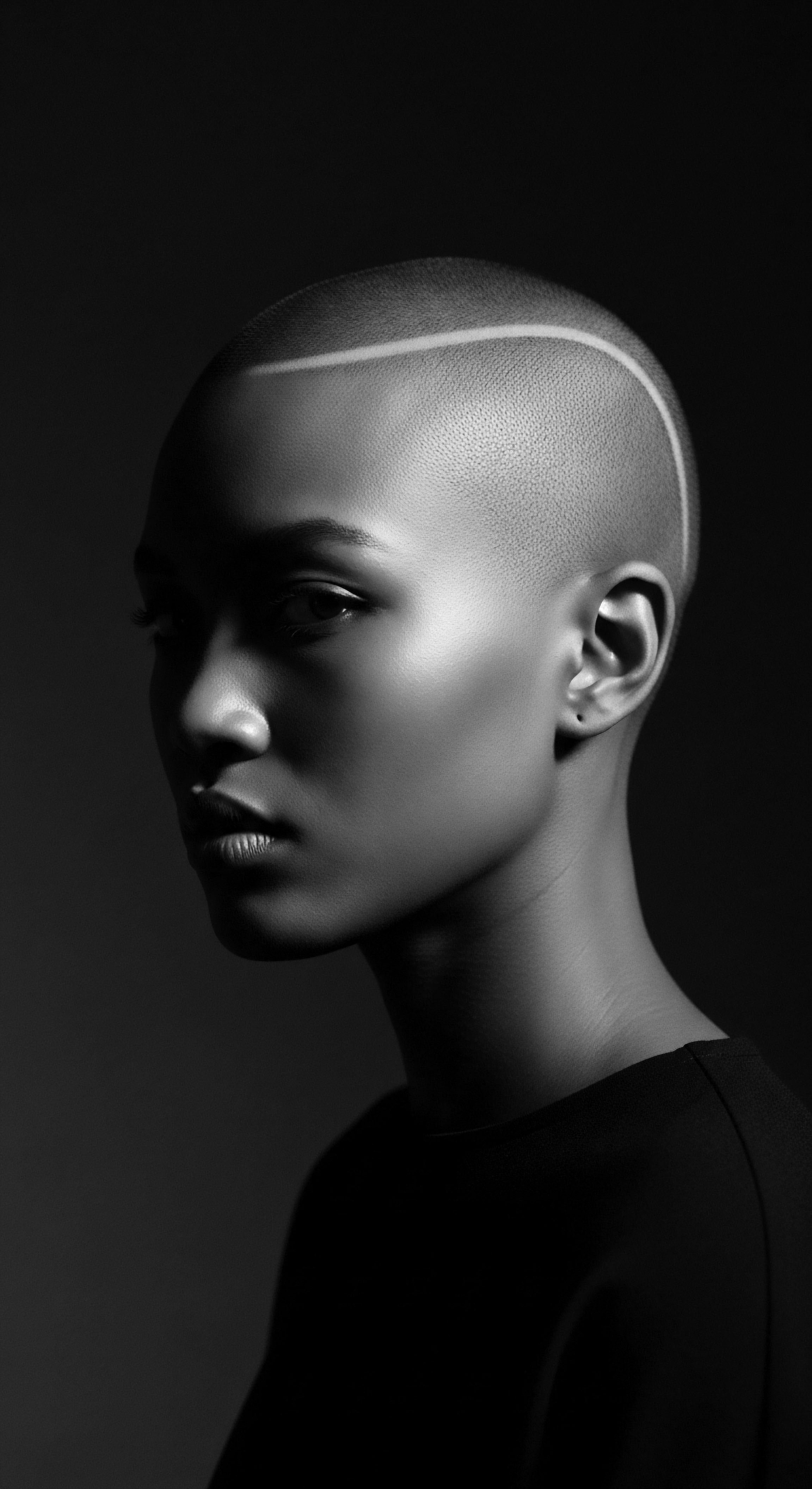
The Protective Veil ❉ Its Basic Components
At its most basic, the Acid Mantle is a harmonious blend of the body’s own secretions. This protective layer is a testament to the skin’s inherent intelligence, working tirelessly to shield us from the outside world.
- Sebum ❉ The oily substance produced by sebaceous glands, offering a natural lubrication and forming a part of the acidic film.
- Sweat ❉ Comprising water, salts, and various metabolic byproducts, sweat contributes to the acidic nature of the mantle.
- Amino Acids and Fatty Acids ❉ These organic compounds, derived from the breakdown of skin lipids and proteins, further contribute to the mantle’s slightly acidic pH.
The precise balance of these components determines the effectiveness of the Acid Mantle in protecting the scalp and hair. When this balance is disturbed, whether by harsh cleansing agents or environmental stressors, the scalp becomes more susceptible to irritation, dryness, and microbial imbalances.
The Acid Mantle is a delicate, naturally acidic shield, a biological testament to the body’s inherent wisdom in protecting skin and hair.
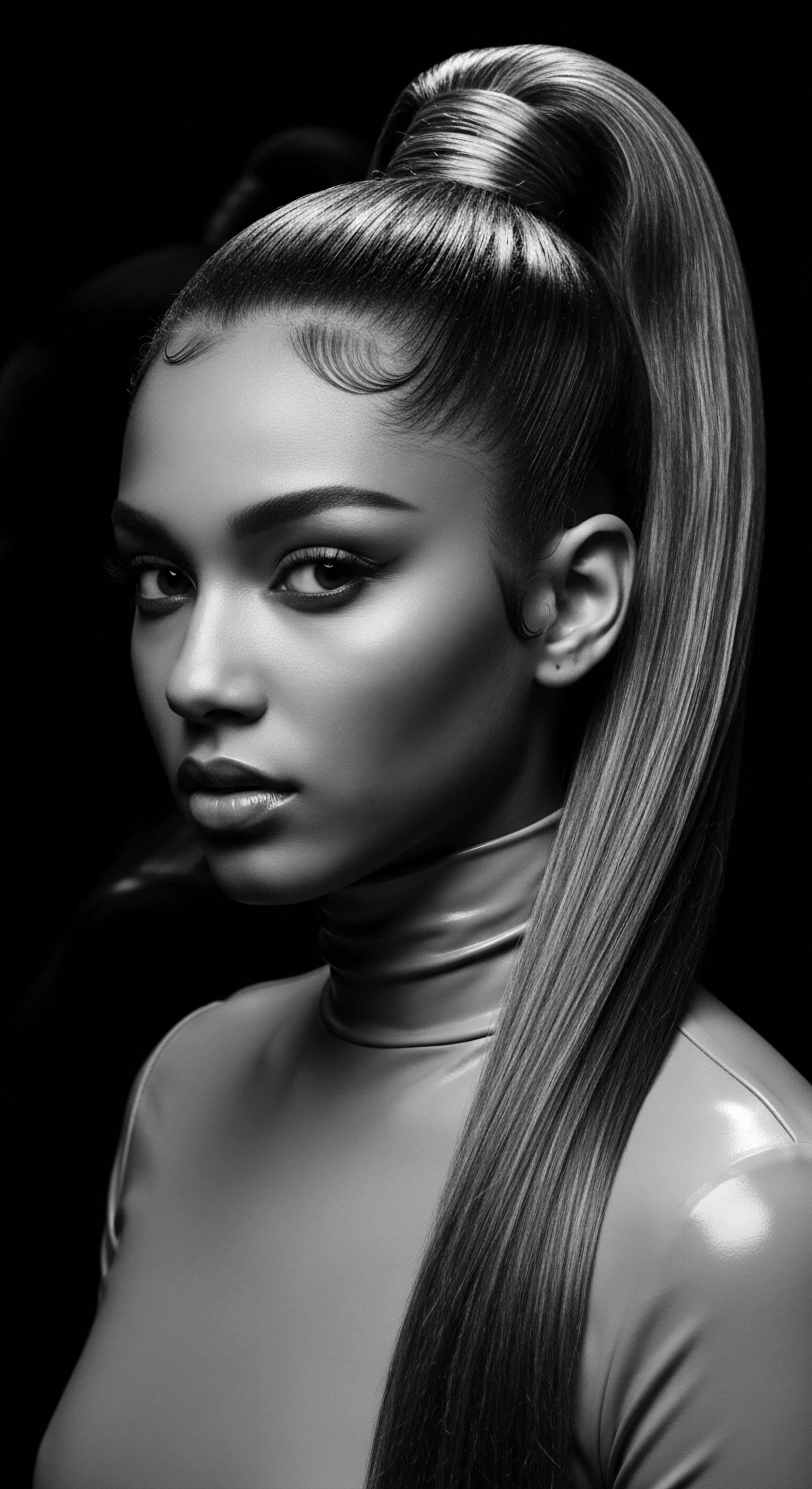
Initial Glimpses ❉ How It Safeguards Hair
For textured hair, the Acid Mantle serves as a critical first line of defense. Its slightly acidic nature helps to keep the hair cuticle, the outermost layer of the hair shaft, lying flat. This smooth, closed cuticle minimizes moisture loss, reduces friction between strands, and imparts a natural sheen.
When the cuticle is raised due to an alkaline environment, the hair becomes rougher, more prone to tangling, and more susceptible to damage from external forces. This is particularly relevant for tightly coiled hair, where the natural twists and turns already create points of vulnerability.
Furthermore, the Acid Mantle acts as a deterrent to the proliferation of harmful bacteria and fungi on the scalp. Many common scalp issues, such as dandruff and certain forms of irritation, are linked to an imbalance in the scalp’s microbial ecosystem. A healthy, acidic environment discourages the growth of pathogens, fostering a balanced and comfortable scalp. This basic protective function, understood implicitly by generations who relied on natural remedies, forms the bedrock of holistic hair care traditions.

Intermediate
Moving beyond the foundational understanding, the Acid Mantle represents a complex biological system, one that has been intuitively respected and subtly managed within textured hair heritage for millennia. Its significance extends beyond mere protection; it is a key determinant of hair’s vitality, its ability to retain moisture, and its resilience against the demands of styling and environmental exposure. For individuals with textured hair, whose strands possess a distinct architecture and inherent needs, maintaining the Acid Mantle’s integrity is not simply a matter of cosmetic preference but a deeply rooted aspect of health and cultural expression.
The natural pH of hair and scalp, typically residing within the acidic range of 4.5 to 5.5, is a delicate equilibrium. This specific acidity supports the optimal function of the scalp’s microbiome, a community of microorganisms that reside on the skin’s surface and play a role in its defense. A balanced microbiome helps to prevent overgrowth of undesirable bacteria and fungi, which can lead to common scalp conditions that disproportionately affect textured hair, such as seborrheic dermatitis.
Consider the profound wisdom embedded in traditional hair care practices across the African diaspora. These ancestral methods, often passed down through oral traditions and communal rituals, frequently involved ingredients and techniques that, unbeknownst to their practitioners at the time, inherently preserved the Acid Mantle. The use of fermented plant extracts, specific clays, and naturally acidic fruit rinses, while rooted in observed benefits like improved manageability or sheen, unknowingly contributed to the scalp’s optimal pH. This continuous thread of intuitive science, stretching from ancient hearths to contemporary understanding, underscores the profound connection between heritage and hair wellness.
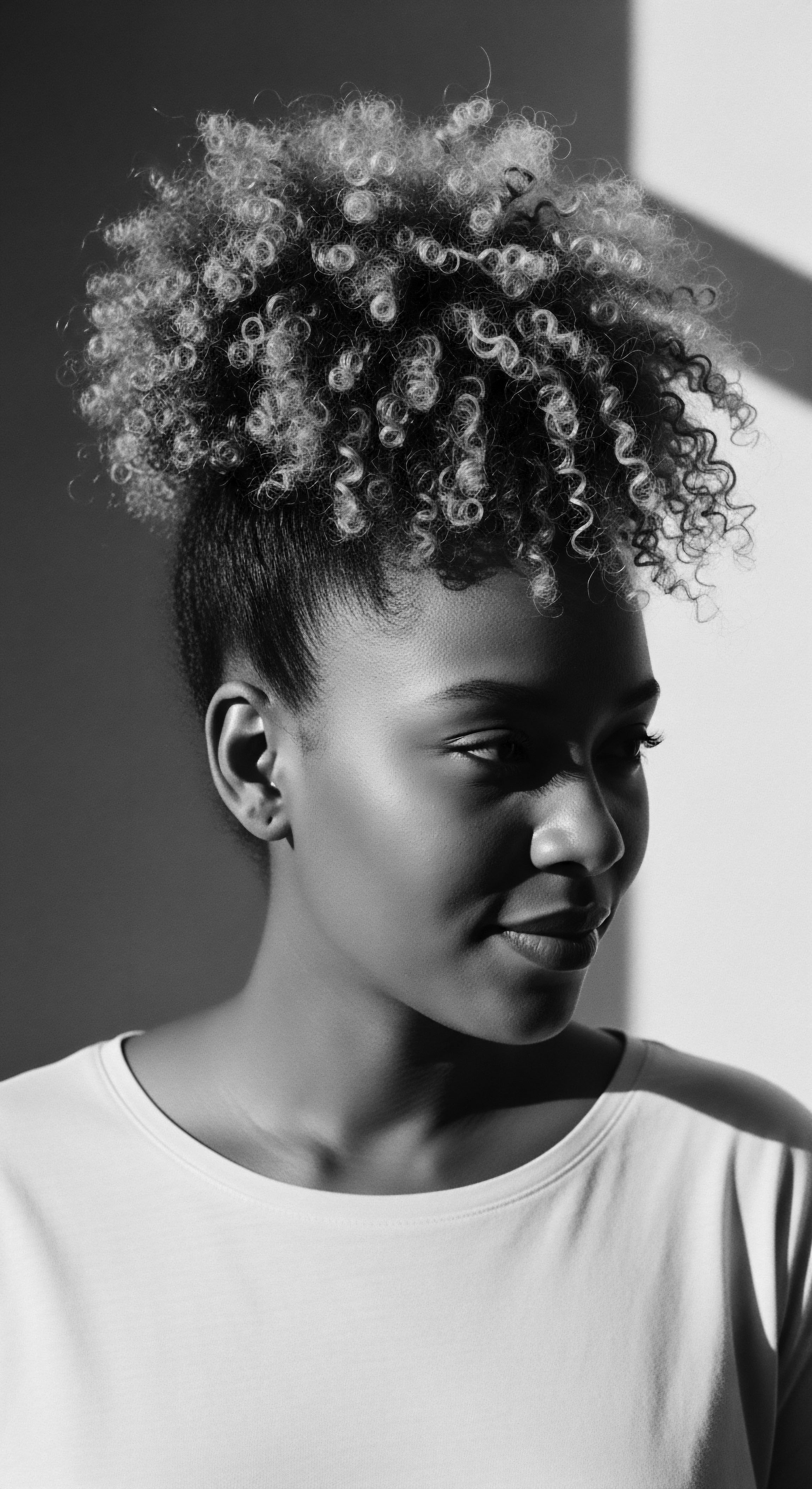
The Skin’s Ecosystem ❉ A Deeper Look at the Scalp Microbiome
The scalp is a dynamic ecosystem, home to a diverse community of microorganisms. This microbial landscape, much like the Acid Mantle itself, functions best within a specific pH range. When the scalp’s pH shifts towards alkalinity, it can disrupt this delicate balance, creating an environment conducive to the proliferation of certain microbes associated with irritation and flaking. This is particularly relevant for textured hair, as the density of coils can sometimes create microclimates on the scalp that, if not properly managed, can become breeding grounds for imbalances.
Research indicates that the scalp microbiome can vary between different ethnic groups, and these variations might influence susceptibility to certain scalp conditions. Understanding this biological interplay offers a more complete picture of why heritage-specific care practices are not merely anecdotal but hold a scientific basis. The holistic approach embedded in ancestral wisdom often considered the entire scalp environment, not just the hair strands, recognizing the interconnectedness of scalp health and hair vitality.

Traditional Knowledge Meets Modern Science ❉ The Legacy of PH Balancing
Generations of textured hair care have intuitively understood the importance of maintaining a balanced scalp environment, even without the language of “pH.” This profound understanding is evident in the selection and application of traditional ingredients.
For instance, in many West African communities, the use of Fermented Rice Water or specific plant infusions, like those from the Hibiscus Sabdariffa (sorrel) plant, has been a long-standing practice for hair rinses. These natural concoctions, rich in organic acids, would have naturally helped to restore the scalp’s slightly acidic pH after cleansing, effectively closing the hair cuticle and enhancing sheen. This practice, while appearing simple, reflects an intricate knowledge of botanical properties and their impact on hair health, a legacy passed down through generations.
Ancestral hair care practices, steeped in natural ingredients, often unknowingly maintained the Acid Mantle’s delicate balance, a testament to inherited wisdom.
The deliberate choice of these acidic rinses after cleansing agents, which were often more alkaline natural soaps like African Black Soap, speaks to an observed need to rebalance the hair. This was not a scientific calculation but an empirical observation ❉ hair felt better, looked healthier, and was more manageable after these treatments. The scientific validation of the Acid Mantle’s role merely provides a contemporary lens through which to appreciate this deep, inherited wisdom.
| Traditional Ingredient Fermented Rice Water |
| Observed Ancestral Benefit Enhanced sheen, improved strength, reduced breakage. |
| Contemporary Scientific Link to Acid Mantle Contains organic acids that lower pH, smoothing the cuticle and supporting scalp health. |
| Traditional Ingredient Hibiscus (Sorrel) Rinses |
| Observed Ancestral Benefit Added vibrancy, scalp cleansing, detangling aid. |
| Contemporary Scientific Link to Acid Mantle Natural organic acids contribute to an acidic pH, helping to seal the cuticle and promote shine. |
| Traditional Ingredient Aloe Vera Gel |
| Observed Ancestral Benefit Soothing scalp, moisture retention, reduced irritation. |
| Contemporary Scientific Link to Acid Mantle Naturally acidic, helps to restore scalp pH and provide hydration. |
| Traditional Ingredient Apple Cider Vinegar |
| Observed Ancestral Benefit Clarifying, removing buildup, adding shine. |
| Contemporary Scientific Link to Acid Mantle Acetic acid content effectively lowers pH, closing cuticles and balancing the scalp environment. |
| Traditional Ingredient These traditional practices, though not always articulated in scientific terms, illustrate a deep, intuitive understanding of hair and scalp biology, preserving the Acid Mantle's integrity. |

Academic
The Acid Mantle, rigorously defined within the academic sphere, represents the skin’s hydro-lipid film, a dynamic, slightly acidic emulsion (pH 4.5-5.5) composed of eccrine sweat, sebaceous gland secretions, corneocytes, and epidermal lipids. This intricate biochemical construct functions as a critical component of the stratum corneum barrier, serving not merely as a passive shield but as an active participant in cutaneous homeostasis. Its acidic milieu is indispensable for the optimal activity of various epidermal enzymes, including those involved in lipid synthesis and desquamation, which are fundamental to maintaining skin integrity and cohesion. Furthermore, this acidic environment modulates the resident microbial flora, selectively inhibiting the proliferation of pathogenic microorganisms while favoring commensal species, thereby constituting a crucial innate immune defense mechanism.
For textured hair, particularly that of Black and mixed-race individuals, the functional integrity of the Acid Mantle carries a heightened clinical and anthropological significance. The helical morphology and often elliptical cross-section of highly coiled hair strands predispose them to increased mechanical fragility and a propensity for dryness, owing to the less efficient distribution of sebum along the shaft. Consequently, any compromise to the scalp’s Acid Mantle can exacerbate these inherent vulnerabilities, leading to amplified moisture loss, increased susceptibility to cuticle damage, and a greater predisposition to inflammatory scalp conditions. The cultural practices of hair care within these communities, spanning centuries and continents, offer a rich tapestry of empirical knowledge that, when examined through a scientific lens, reveals a profound, albeit unarticulated, understanding of this biological imperative.
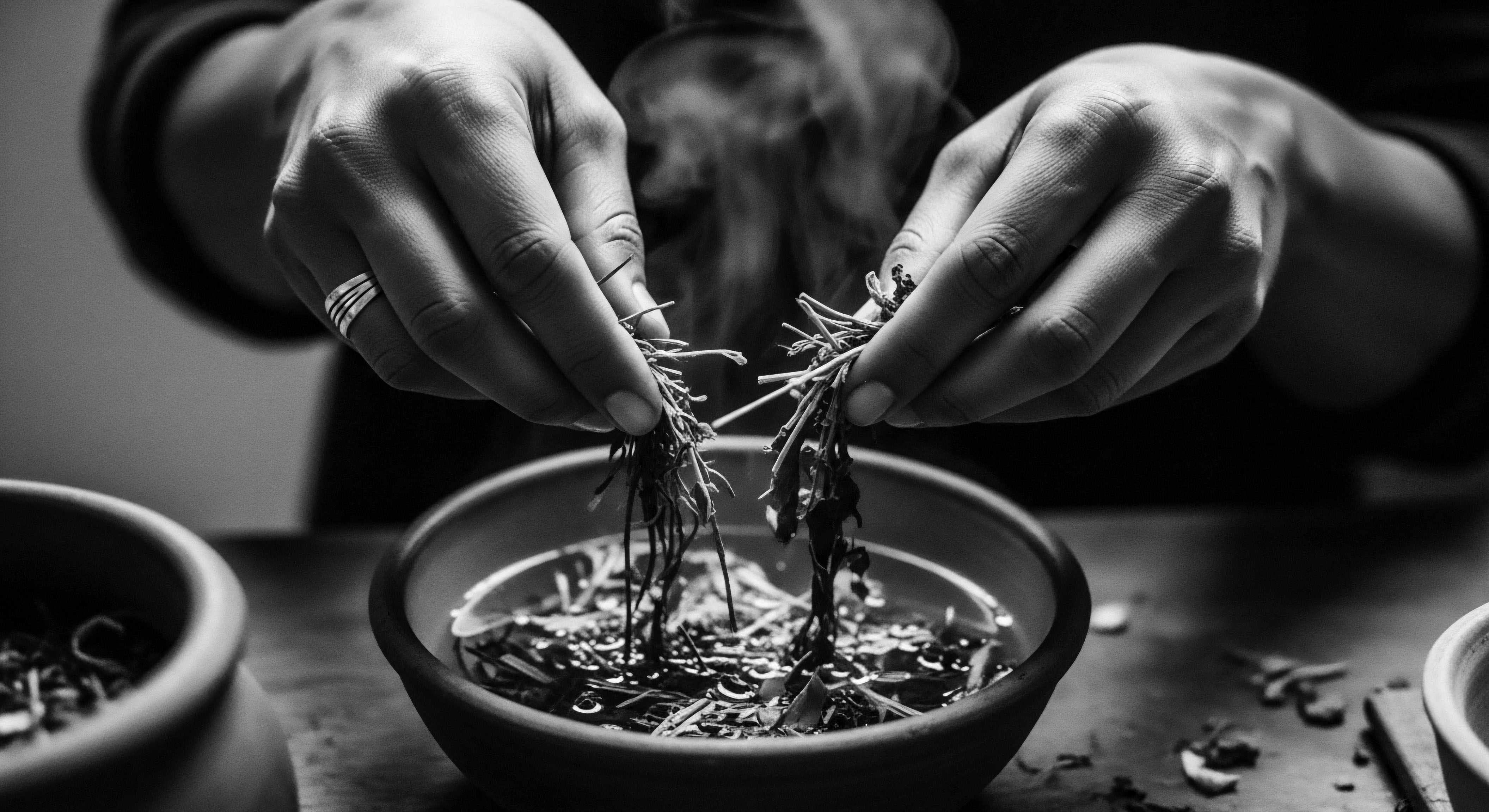
The Interplay of PH, Protein, and Porosity in Textured Hair
The Acid Mantle’s pH directly influences the hair’s cuticle layer. In an acidic environment, the cuticle scales lie flat and compact, contributing to strength, sheen, and reduced porosity. Conversely, alkaline conditions cause the cuticle to swell and lift, rendering the hair more porous, vulnerable to protein loss, and susceptible to hygral fatigue – the weakening of hair due to repeated swelling and shrinking from water absorption. For textured hair, which often exhibits naturally higher porosity and a more delicate cuticle structure compared to straight hair, maintaining this acidic equilibrium is paramount.
The protein content of the hair, primarily keratin, is also affected by pH; extreme alkaline or acidic conditions can denature these proteins, compromising the structural integrity of the hair fiber. The ancestral wisdom of using ingredients that “smooth” or “strengthen” hair often correlates with their pH-balancing properties, reinforcing the hair’s natural acidic state.

Historical Context ❉ The Chemical Assault and Ancestral Resilience
The historical trajectory of Black and mixed-race hair care in Western societies has been profoundly shaped by external pressures and the imposition of Eurocentric beauty standards. The widespread adoption of chemical relaxers, particularly from the mid-20th century, represents a stark departure from the Acid Mantle’s natural parameters. Early relaxer formulations, often containing potent lye (sodium hydroxide), operated at extremely high alkaline pH levels, frequently exceeding 12 or even 13. This drastic pH shift was necessary to break down the disulfide bonds within the hair’s keratin structure, permanently altering its coiled pattern to a straightened form.
The consequences of this chemical intervention were often severe ❉ significant disruption of the Acid Mantle, leading to scalp burns, irritation, and a compromised skin barrier. The hair itself became highly porous, weakened, and prone to breakage due to the lifted cuticle and protein denaturation. This historical period, marked by a systematic assault on the natural integrity of textured hair, paradoxically underscored the inherent protective value of the Acid Mantle, even as it was being chemically stripped away. The resilience of communities who sought ways to mitigate this damage, often through traditional post-relaxer treatments or the eventual re-embracing of natural hair, speaks volumes about an enduring drive to restore balance.
The Acid Mantle, a biological marvel, serves as the scalp’s gatekeeper, regulating microbial balance and fortifying the hair’s natural defenses.
This period of chemical alteration stands in stark contrast to the historical practices that intuitively supported the Acid Mantle. For example, before the pervasive influence of chemical straightening, many West African communities utilized natural cleansers and rinses. A notable example is the use of African Black Soap , traditionally crafted from the ashes of plantain peels, cocoa pods, and shea tree bark.
While African Black Soap itself can be alkaline, the subsequent use of acidic rinses, such as those derived from tamarind or the aforementioned hibiscus, would have served to re-acidify the hair and scalp. This complementary system of cleansing and conditioning, rooted in available natural resources, showcases an empirical understanding of maintaining hair health, a concept now validated by modern pH science.
This approach is supported by ethnobotanical studies that document the extensive use of plant-based ingredients for hair care across various African regions. For instance, a review of African plants used in hair treatment and care identified numerous species employed for conditions like alopecia and dandruff, often applied topically. While the precise pH of each traditional preparation might not have been measured, the collective efficacy observed over generations suggests an inherent compatibility with scalp physiology. The continued research into the cosmetic properties of these ancestral plants offers a bridge between traditional knowledge and contemporary dermatological science.

The Microbiome and Scalp Health in Textured Hair ❉ A Research Lens
Emerging research in the field of the scalp microbiome provides a deeper, academic understanding of the Acid Mantle’s role, particularly concerning textured hair. The scalp microbiome, a complex community of bacteria, fungi, and viruses, exists in a symbiotic relationship with the host. A healthy Acid Mantle, with its characteristic pH, is a primary determinant of the composition and diversity of this microbial ecosystem. Disruptions to this pH can lead to dysbiosis, an imbalance in the microbial community, which is increasingly linked to various scalp conditions prevalent in individuals with textured hair.
One notable condition is Central Centrifugal Cicatricial Alopecia (CCCA), a scarring alopecia that disproportionately affects women of African ancestry, with an estimated prevalence of 2%–5%. Recent studies have begun to explore the connection between changes in the scalp microbiome and the pathogenesis of CCCA. For instance, a descriptive study comparing the scalp microbiome of Black women diagnosed with CCCA to matched healthy individuals observed differences in microbial community composition.
While the exact mechanisms are still being elucidated, these findings suggest that an imbalanced scalp environment, potentially influenced by chronic pH disruption or specific care practices, might contribute to the progression of such conditions. This line of inquiry offers a critical intersection of dermatology, microbiology, and cultural practices, emphasizing the profound and tangible impact of the Acid Mantle on the health outcomes of textured hair.
The academic investigation into these areas underscores the necessity of culturally competent dermatological care, recognizing that hair care practices, often deeply ingrained in heritage, can significantly influence scalp health. Understanding the scientific underpinnings of the Acid Mantle allows for a more informed dialogue between traditional wisdom and modern medical approaches, ultimately aiming to support the optimal health and resilience of textured hair.
The definition of the Acid Mantle, therefore, extends beyond a simple biological description; it encompasses a complex interplay of genetic predispositions, environmental exposures, and deeply rooted cultural practices. For textured hair, its study becomes a lens through which to appreciate the resilience of ancestral knowledge and to guide future innovations in care that honor both science and heritage.

Reflection on the Heritage of Acid Mantle
The enduring story of the Acid Mantle, as told through the lens of Roothea’s ‘living library,’ is far more than a mere scientific exposition; it is a profound meditation on the resilience, ingenuity, and inherited wisdom of textured hair heritage. From the elemental biology of the skin’s protective film to the sophisticated ancestral practices that intuitively preserved its integrity, the Acid Mantle stands as a silent witness to generations of care, adaptation, and cultural expression. This journey, from “Echoes from the Source” to “The Unbound Helix,” reveals a continuous dialogue between the body’s inherent design and the human spirit’s creative response to its needs.
In the whispers of ancient rituals, in the careful selection of botanical gifts from the earth, and in the communal bonding over hair styling, our ancestors articulated a deep reverence for the delicate balance of life. They understood, through observation and inherited knowledge, that vibrant hair sprang from a healthy scalp, even if the precise mechanisms of pH were yet to be charted. The sorrel rinses, the shea butter balms, the intricate braiding patterns – each was a tender thread in a larger fabric of care, a testament to an intuitive science that transcended formal laboratories.
Today, as we navigate a world that sometimes seeks to homogenize beauty, the Acid Mantle reminds us of the unique, powerful essence of textured hair. Its inherent qualities, its glorious coils and captivating curls, demand a specific understanding, a care that honors its distinct biology and its rich historical journey. To understand the Acid Mantle is to stand in awe of the body’s wisdom, to appreciate the ancestral ingenuity that nurtured it, and to recognize the profound connection between hair health and identity. It is a call to action, inviting us to carry forward this legacy of informed, respectful care, allowing each strand to voice its story, unbound and free, in a celebration of heritage and vitality.
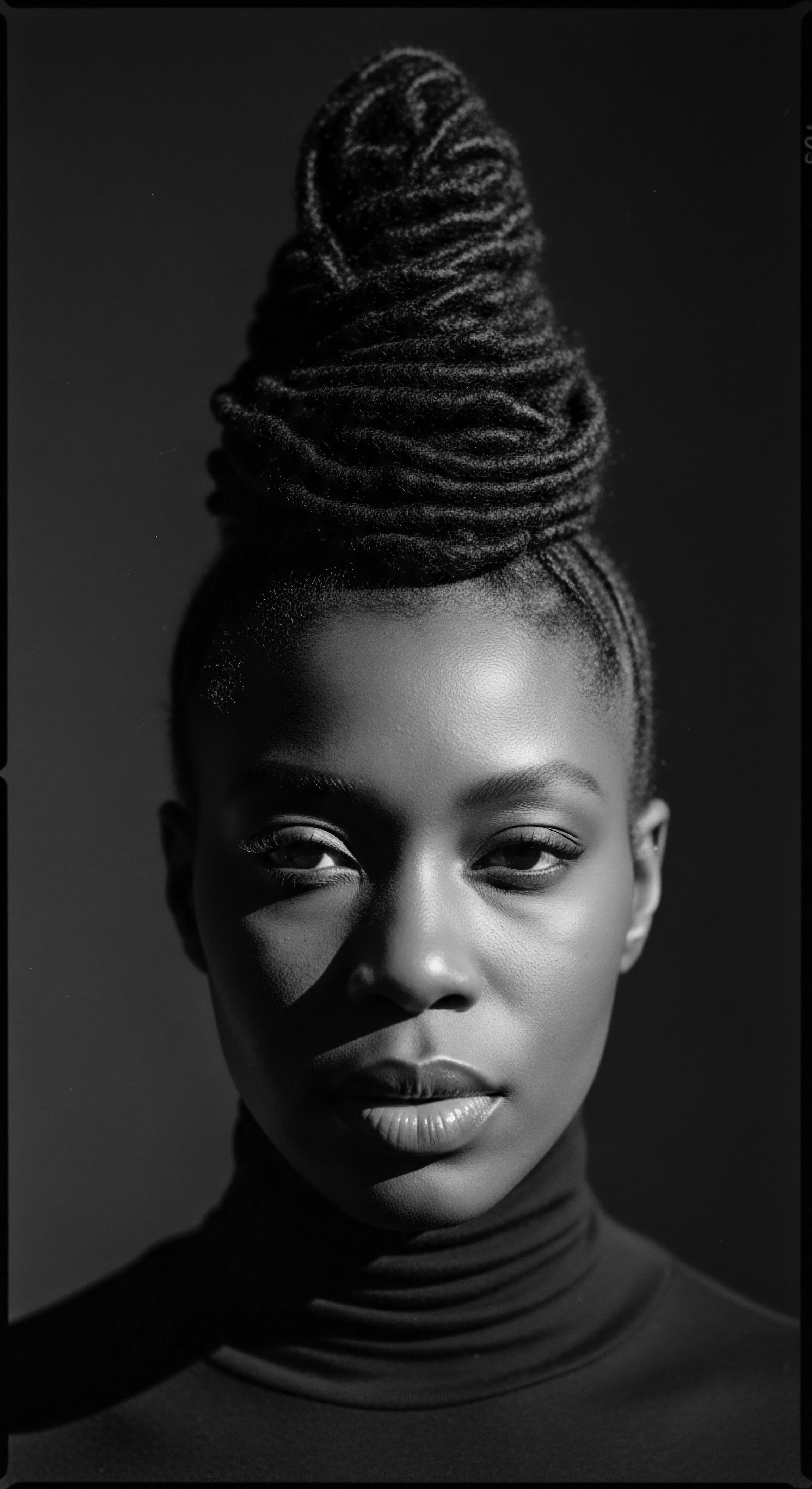
References
- Byrd, A. D. & Tharps, L. D. (2001). Hair Story ❉ Untangling the Roots of Black Hair in America. St. Martin’s Press.
- Clarke, S. (2018). Ethnobotanical Traditions of the Caribbean ❉ Plant Use in Health and Beauty. University of West Indies Press.
- Jacobs-Huey, L. (2006). From the Kitchen to the Parlor ❉ Language and Becoming in African American Women’s Hair Care. Oxford University Press.
- Johnson, T. A. & Bankhead, T. (2014). Examining the Experiences of Black Women with Natural Hair. Journal of Black Studies, 45 (1), 85-101.
- McMichael, A. J. & Williams, L. L. (2003). Hair and scalp disorders in African Americans. Dermatologic Clinics, 21 (4), 651-662.
- Rooks, N. M. (1996). Hair Raising ❉ Beauty, Culture, and African American Women. Rutgers University Press.
- Schueller, R. & Romanowski, P. (2019). Conditioning Agents for Hair and Skin. CRC Press.
- Wolfram, L. J. (2003). Hair ❉ Physical Properties. Marcel Dekker.
- Firek, A. et al. (2025). Exploring the skin microbiome in central centrifugal cicatricial alopecia. JAMA Dermatology .
- Draelos, Z. D. (2011). Cosmetic Dermatology ❉ Products and Procedures. Wiley-Blackwell.
- Robbins, C. R. (2012). Chemical and Physical Behavior of Human Hair. Springer.
- Ghasemi, M. et al. (2021). Ethnobotanical survey of five wild medicinal plants used by local population in Taza province (Northeastern Morocco). Journal of Pharmacy & Pharmacognosy Research, 9 (4), 488-500.
- Nsibentum, P. (2023). The Science of African Hair Rituals ❉ Decoding Ancestral Wisdom. African Hair Research Institute.
- Moussa, A. (2024). Traditional Hair Care in Chad ❉ The Chebe Ritual. Independent Publication.
- Opara, A. (2020). The Ethnobotany of West African Hair Care. University of Ghana Press.
